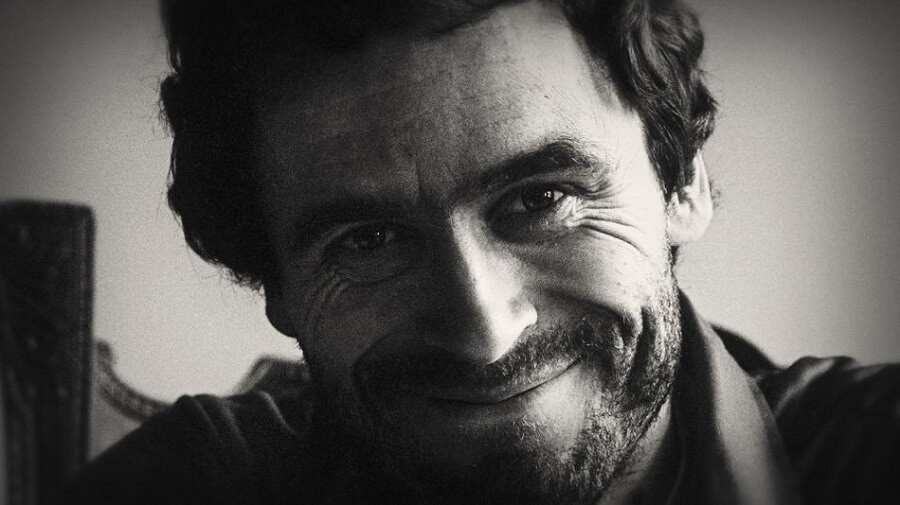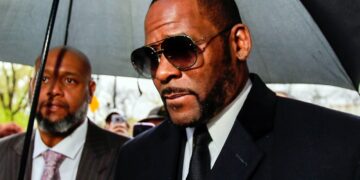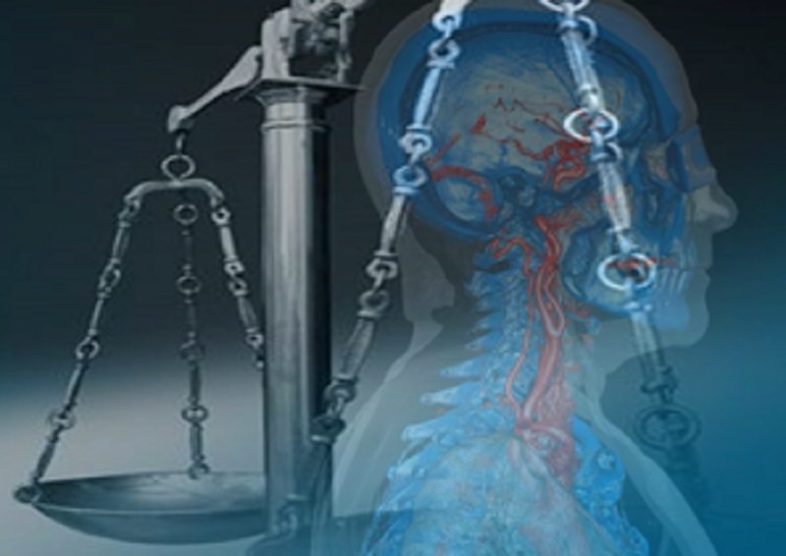Written by Crissy Froyd
Once called Multiple Personality Disorder, Dissociative Identity Disorder (DID) is a severe form of personality dissociation causing disordered thoughts and disconnecting thinking. In the ongoing quest to understand the mind of a serial killer, some professionals have questioned whether this was the driving force behind the murderous behaviors of Ted Bundy.
It’s January of 1989. Detective Robert Keppel and convicted murderer Ted Bundy sit across from each other in a small space with a tape recorder. This will be one of Bundy’s last interviews, and he won’t be escaping Florida’s electric chair this time.
Just mere seconds into the talk, the two have already disagreed upon a matter discussing the crimes.
“To me, the ‘why’ never caught anybody,” Keppel says. “The cops and their mentality think of what, where, when and who. And, so, we’re kind of stuck with you wanting the why.”
“I’m not trying to convince you, Bob, that you should be interested in the ‘why’ if you’re not,” Bundy responds. “I think there are a lot of people who are. I know I am. And I think a lot of people are interested in why. People constantly will ask me ‘why?”
Even over 30 years after Bundy’s death, people are still asking this question.
Even before Bundy’s first confirmed murder, plenty of red flags were evident throughout his childhood years.
Psychiatrist Dorothy Otnow Lewis, one of the closest to Bundy, described his grandfather whom he lived with early on as ‘an extremely violent and frightening individual.’ The grandfather would ‘kick dogs, swing cats by their tails, beat people who angered him, and read pornography voraciously,’ she said.

Childhood friend Sandi Holt also mentioned the Tiger Traps he used to set in the woods as a young boy Conversations With a Killer: The Ted Bundy Tapes.
“He liked building tiger traps in the woods,” she said. “They’d build a big pit in the ground and put sharpened sticks down in it, then cover the top with vegetation.”
Lawyer John Henry Browne noted in his book, The Devil’s Defender, that at a young age, Bundy bought mice at a local pet shop and would build small corrals in the woods to “play God” and decide which ones would live.
He would go on to use a very similar approach when he shifted his focus to young women.
Bundy also told his lawyer that he took his first life in his early adolescent years.
“…he told me, and I think the only person he told, that the first person he killed was a young boy when they were playing some kind of sex game in the woods,” he said on Oxygen’s “Ted Bundy: in Defense Of.” “And so he must have been only 12, 13, 14, I didn’t go into a lot of detail because I didn’t need to, or want to.”
There are several theories as to what exactly drove the killer to do he did, and it seems no one group of people can agree upon an answer.
One that has been presented is the thought he had Dissociative Identity Disorder. Psychiatrist Dorothy Otnow Lewis, who testified at one of the killer’s hearings that she thought he was bipolar, has since come up with this diagnosis.
In order for an individual to be diagnosed with such a disorder, one must experience at least two distinct personality states. This involves a change in sense of self, and is marked by changes in behavior, consciousness, memory, perception, cognition and motor function. Gaps in memory are also associated with the condition.
Lewis noted that Bundy could go from a state of euphoria and compulsive talking to anger and long periods of silence almost instantly.
She also told defense attorney Polly Nelson she was “extremely confident that there was something unique about Ted’s brain,” perhaps, “Some unique brain chemistry or even a tumor in a critical location that blocked his empathy.”
Bundy’s shift in personality extended beyond just the mental. It was physically notable.

There was once an investigator who went into Bundy’s cell and told Lewis that he “became weird on me . . . did a metamorphosis, a bit of a body and facial change, and . . . almost an odor emitted from him.”
He said this lasted for roughly 20 minutes, and that there was a “change of personality with extreme tension. I was afraid of him . . . it was very scary.”
Perhaps the most convincing evidence of this are the words of Bundy himself.
In the interviews with Stephen Michaud, Bundy does say some things that align almost perfectly with DID.
When speaking in the third-person of “the individual,” who is actually himself, he describes the power of “the entity.”
The condition continued to grow until it controlled him. He would hear a voice and did as the entity told him to do. As Bundy cradles the tape recorder and begins to elaborate, his beady, crystal blue eyes turn to pure black and a small welt begins to form under his eye.
“It would reach a point where the anger, the frustration, the anxiety, the poor self-image, feeling cheated, wronged, insecure… he decides upon young attractive women being his victims,” Bundy told Michaud. “When the need of that malignant condition had been satisfied through sexual release, he realized that he couldn’t let the girl go.”
Bundy explained that this type of person believed he would satisfy his urges by killing, but the act instead only made the void larger.
“Perhaps this person hoped that through violence, through this violent series of acts, if with every murder leaving a person of this type hungry… Unfulfilled. Would also leave him with the obviously irrational belief that if, the next time he did it he would be fulfilled,” Bundy said. “And the next time he did it he would be fulfilled. Or the next time he did it he would be fulfilled.”
Now, it’s true that Bundy didn’t admit to being mentally ill to any degree nor did he say he believed he suffered from any type of disorder.
“I’m not an animal. I’m not crazy. I don’t have a split personality. I mean, I’m just a normal individual.” – Ted Bundy
It’s important to note, though, that Bundy frequently lied about and was in a state of denial about violence in the household and other events throughout his childhood and teenage years.
Israeli professor Arnon Edelstein firmly believes Bundy suffered from DID, and that the deadly concoction between the disorder and Antisocial Personality Disorder caused Bundy to kill in the manner and to the extent in which he did.
Edelstein claims that the abuse Bundy suffered as a child and his discovery that he was born illegitimate caused his personality to split into two identities so that he could “run away from his difficulties into the fantasy.”
“There is a debate whether people who suffer from DID are aware to the two identities,” Edelstein said.“I believe that people with DID know that they have two personalities, one is a normative one that enable them to live and work, while the other helps them to run away. I believe this was Bundy’s personality and that he was aware of his pathology. Because of the ASPD, so he didn’t care or feel any regret.”
Edelstein is also of the opinion that with the two conditions coexisting within an individual, only a “dramatic occurrence” can change them, and that otherwise, they are simply too far gone.

Is it possible that Bundy wanted to kill this negative part of himself?
Attorney John Henry Browne is just one of many who believe Bundy had a death wish.
>“When I was in Aspen, after his first escape… he asked me where a person would go to actually get the death penalty. I thought that was an odd question to say the least, and I responded, ‘Oh, Florida or Texas.”
Shortly after the exchange, Bundy escaped, going from Chicago, Illinois to Ann Arbor, Michigan, and eventually to Florida — a state where he knew the death penalty was very active.
While Browne found his client to be a sociopath who was not mentally ill and doesn’t think he was totally driven by such a disorder, he finds it possible Ted’s recognition of his dark tendencies may have been a reason for his desire to die.
“So, why he had a death wish, I don’t know,” Browne said. “It is possible to hypothesize that he knew he was a bad person who needed to be stopped.”
Browne believes there was some level of dissociation present when Bundy committed his murders, but that alcohol also played a large role.
“I think Ted would disassociate to a certain extent when he was doing his ‘projects’… I think that alcohol was always involved in Ted’s negative behavior. But, not to the point of being drunk. I think it was to the point of lessening his inhibitions and fueling his fantasies. I think he had a lot of fantasies. I don’t think he was dissociative.” – John Henry Browne
Browne was also witness to a change in Bundy’s personality that went against his so commonly sociopathic nature.
“I went in and he was laying on the floor and he was crying,” Browne said. “That was the first time I had seen that, ever. He looked up at me and said ‘John, I want to be a good person, I’m just not. Sociopaths rarely say anything like that. So, I was very surprised, and I don’t think he was crying for himself. I think he was feeling remorse, which is also very unusual for a sociopath. That exchange where he was emotional and saying stuff like that only lasted for a couple of hours. Probably the longest two hours of my life, because he started telling me about his ‘projects’ as he called them… I found it pretty extraordinary when he said ‘I want to be a good person, I’m just not.”
It was also during this period that Bundy told his lawyer he had killed over 100 people.
This isn’t the only time Bundy “came to,” either. Special agent Bill Hagmeier recalled a time when Bundy nearly committed suicide.
“…He was sitting across from me, and he had a pen,” the special agent noted. “He said, ‘I can stick this so far up my artery it’ll squirt in your face. And I’ll be drained before anybody even gets here.’ And, I said, ‘Is that what you want to do?’ And he says, ‘I’m not gonna let them kill me.”
Shortly after, though, Hagmeier spoke with Bundy about his apparent and sudden faith, convincing him not to go through with the act as he feared the possibility of being eternally damned..
Another take on Bundy’s psychology was a severe addiction to violent pornography.
This angle was primarily pursued by Rev. James Dobson, who interviewed Bundy just hours before his execution.
In the interview, Bundy blamed the material for what drove he and many other serial killers to do what they did in the manner they chose to.
“I’ve lived in prison for a long time now and I’ve met a lot of men who were motivated to commit violence just like me and without exception, every one of them was deeply involved with pornography,” Bundy told Dobson. “Without question, without exception, deeply influenced and consumed by addiction to pornography.”
While this argument can appear convincing and sincere at first glance, it’s probable this was just Bundy’s manipulative tactics on display yet again to gain another stay of execution.
“If you listen closely to the Dobson interview, Ted never explicitly blames pornography for his murders, but he certainly used it to shape the fantasy that was at the heart of the matter and that, in his mind, made him a victim,” Michaud explained. “Ted claimed to be at a loss to explain how his adolescent interest in the images in Playboy and similar periodicals fused with a deep, deep violent anger focused on young women.”
Rather, Bundy viewed his victims as symbolic and had specific criteria.
“Ted told me at different times and in different ways that his victims were symbols to him – again those abstractions – of attractive, privileged females who made him feel inadequate,” Michaud said. “He wanted to erase them, and in the process deny them to their families and boyfriends. He talked a lot about possession, possessing these females “as one might a potted plant or a Porsche.” That’s actually a paraphrase. The real quote is very close. Note that as far as is known, Bundy killed no prostitutes or women of color. He told other interviewers that he was most interested in “worthy” targets. That’s one of the reasons, I think, he refused to discuss the two 12-years-olds he killed. He was embarrassed to have committed such plainly aberrant homicides.”
Author and researcher Kevin Sullivan also didn’t buy Bundy’s statements.
“Ted Bundy was once again placing blame on something else for why he became a diabolical killer of young women and pre-teen girls. Pornography, violent or otherwise, had nothing to do with what Bundy became. That said, growing up, Bundy mixed violent fantasies with his sexual fantasies, but this was not sparked by the viewing of pornography but rather was the result of his fractured personality; a personality that was already on display with the Cowell family when Bundy was but a small child. As he grew up, he did love the detective magazines, and they were odd publications, often showing frightened large-breasted women cowering before threatening men.” – Kevin Sullivan
It seems plausible the pornography may have factored into what Bundy did, but it can’t be nailed down as the sure cause.
“But in my opinion, from all of my years of research, these fed what was already within Ted Bundy and were not the cause.” Sullivan said.
Bundy even told Hagmeier plainly that pornography was never the true motive.
“I never said it made me do it. But I did as best as I could to try to get them to help me. You know it didn’t make me do it. I did it because I wanted to do it.”

Speculation surrounding the cause of Bundy’s actions has existed and fascinated for decades — and looks to continue in the future.
It’s difficult to reach a definite conclusion for many reasons — one being the fact Bundy is no longer alive to question and evaluate.
But it’s also curious to note that even Bundy didn’t fully grasp who he was, and spent a lot of time in his final years trying to find an answer. If the man who committed the crimes can’t even reason as to why he did it, it’s hard to expect anyone else to pinpoint it, either.
“Ted never figured out who he was, although he gave the subject a lot of thought,” Michaud said. “He’d read voraciously on the subject, and interviewed other serial killers in prison, looking for clues to his disorder. He bragged to me that he held “a Ph.D. in serial murder.” I think that was mostly his narcissism expressing itself.”
In the eyes of Browne, who may have been closer to him than anyone else, Bundy was simply born evil.
“I just came to the conclusion that Ted was evil. That there was no sense of right and wrong that you and I would understand. He had his own rules. He had his own opinions and his own grandiose to say the least. Ted was born evil. I never wanted to believe that about anyone.”
References
- A Serial Killer Warns the World About Pornography. (n.d.) Dobson Digital Library.
- Browne, J. H. (2016). The Devil’s Defender: My odyssey through American criminal justice from Ted Bundy to the Kandahar massacre. Chicago, Il: Chicago Review Press Incorporated.
- Conversations With a Killer: The Ted Bundy Tapes. (2019, January 24).
- Psychiatrist: Bundy’s Mental Problems May Have Dated From Infancy With PM-Bundy. Bjt. (1989, January 25). AP News.
- Ted Bundy Documentary – Death Row Tapes (Full). (2017, February 21). Uploaded by TedBundyStuff.
- The Remaining Recordings of Bill Hagmaier’s 1986 and 1989 Interviews with Ted Bundy, “The Master of Disguise” (n.d.). Darksider Press.
- Thrasher, J. (2018, July 16). Ted Bundy Admitted To His Lawyer That He Killed A Young Boy In The Woods. Oxygen.
- 8 Most Shocking Revelations From Conversations with a Killer: The Ted Bundy Tapes. (2019, January 25). Crime Viral.
Cite This Article
Froyd, C. (2019, Jun 26) The Question of Why: Did Ted Bundy have Dissociative Identity Disorder? Crime Traveller. Retrieved from https://www.crimetraveller.org/2019/06/did-ted-bundy-have-dissociative-identity-disorder/
About the author: Crissy Froyd is a current junior at LSU pursuing a Bachelor’s Degree in Mass Communication and a minor in Psychology. She also serves as the managing editor of the Tennessee Titans division of USA TODAY SMG, and covers LSU sports for multiple outlets. Crissy can be reached at [email protected].














































